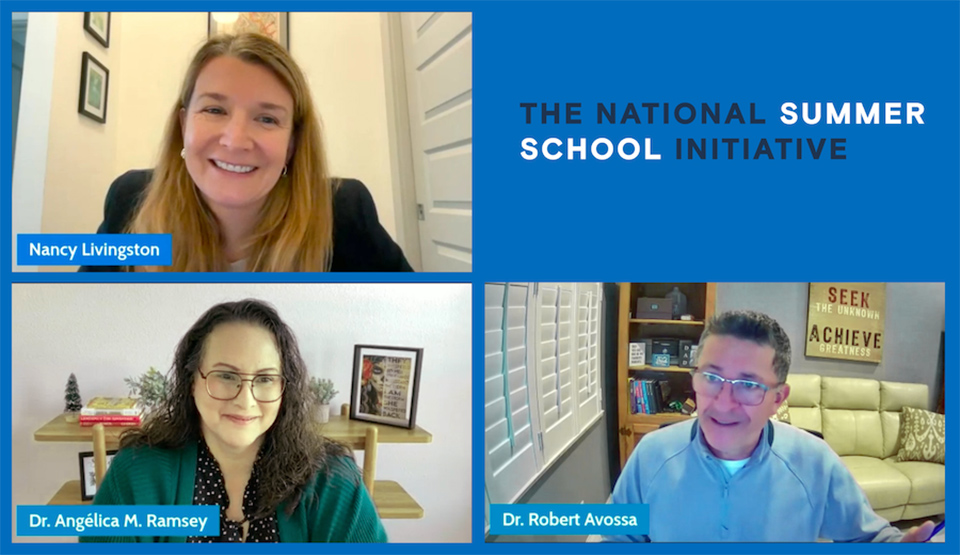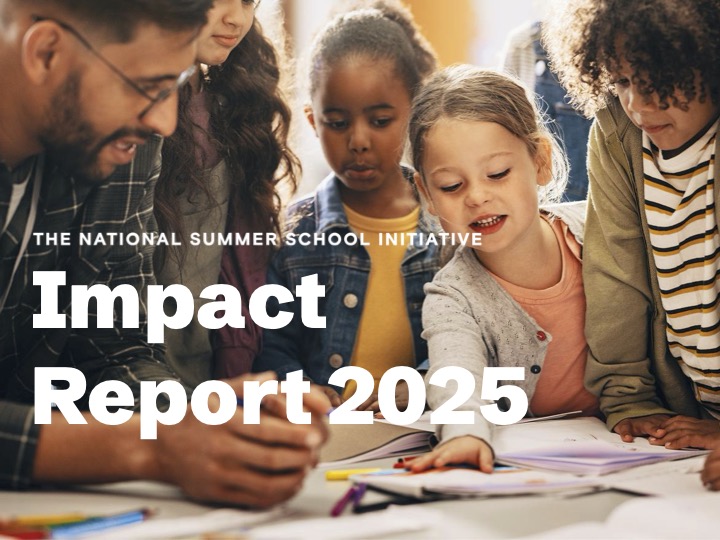Summer school often carries a stigma, perceived as a consequence for struggling students.
However, this narrative overlooks its potential as a critical lever for student achievement and professional development. Summer represents 12% of the instructional year – a significant opportunity to strengthen Tier 1 instruction and address learning gaps when used strategically.
Dr. Robert Avossa explained in a recent LinkedIn live, “Summer school isn’t punishment anymore – it’s an opportunity for kids to explore electives, practice leadership skills, and get ready for transitions like middle to high school.”
By embracing this perspective, districts can unlock the true value of summer learning programs – creating opportunities for students to excel, teachers to grow, and schools to make meaningful progress toward their long-term goals.
Building the Foundation for K-12 Summer Learning Programs
Effective summer programs start with intentional planning. District leaders must assess their capacity to decide what to handle in-house and what to outsource. For example, depending on capacity and expertise, internal resources might focus on operations and logistics, while external partnerships could help with all academic content and teacher training.
A critical step is aligning summer school with broader instructional priorities. Instead of viewing it as a standalone effort, districts should integrate summer education into strategic plans. As Dr. Angelica Ramsey emphasized, “What we don’t do enough in K-12 is to look at expanded learning as a core strategy. If it’s not in the plan, then you’re not going to think about it, put the resources behind it, or evaluate its impact.”
For example, a school district focusing on the science of reading could use summer programs to reinforce those skills for both students and teachers. This ensures that summer learning contributes directly to year-round goals and leverages the additional 12% of the instructional year.
Tip: Dedicate planning time to identify gaps, prioritize needs, and define success metrics, ensuring resources are allocated effectively.
Equity and Engagement: Making Summer Learning Meaningful for All Students
Summer school has often been seen as remedial, but reframing it as an enriching experience can change that perception. Personalized invitations, such as a teacher or counselor reaching out to families, can replace impersonal flyers or robo-calls. This approach ensures parents and students understand the value of participating.
Enrichment activities can boost engagement, especially when districts leverage community partnerships. Collaborating with local nonprofits or parks and recreation departments can provide students access to activities like art, dance, and STEM programs. For older students, transitional programs, such as middle-to-high-school bridge initiatives, offer academic support while preparing them for the next stage of their education.
Renaming programs to reflect growth and privilege – like “Summer Leadership Camp” or “Academic Adventure Week” – can further change mindsets. As Dr. Ramsey noted, “We have to change the mindset. Going to summer school should feel like a privilege, like summer band camp or athletic training – it’s about building skills and growing, not punishment.”
Key Insight: Equity is vital. Remove barriers like transportation, meals, or childcare to make these programs accessible to all families, particularly in underserved communities.
Professional Growth and Leadership in Summer Learning
Summer school isn’t just for students – it’s a powerful tool for teacher and leader development. When designed thoughtfully, summer programs provide low-stakes opportunities for educators to grow professionally, test new strategies, and collaborate with peers.
One approach is to prioritize mentorship and coaching during summer. Pairing aspiring principals with seasoned administrators allows districts to build leadership capacity in a supportive environment. Similarly, offering teachers the chance to experiment with different grade levels or subjects can help them develop new skills.
Districts should carefully select educators who are excited to participate, framing summer teaching as a privilege rather than a requirement. Many teachers actively seek high-quality professional development to enhance their skills and advance their careers, and summer programs can be a perfect platform for this growth. Embedding professional learning communities into summer programs not only meets this demand but also ensures teachers receive continuous feedback and meaningful opportunities for development.
Example: In one district, summer teachers were encouraged to try innovative instructional techniques, supported by immediate feedback from mentors. This hands-on experience not only improved their confidence but also strengthened their instructional practices during the school year.
Measuring Success in Summer Education Programs
Measuring the impact of summer school programs is essential to justify the investment and refine future efforts. Key metrics include:
- Attendance rates: Are students showing up?
- Academic growth: Use pre- and post-assessments to measure progress.
- Feedback: Surveys from students, families, and teachers can provide insights into what worked and what needs improvement.
Data collection should extend beyond summer. By tracking students who attended summer programs versus those who didn’t, districts can demonstrate long-term gains, such as improved reading proficiency or reduced achievement gaps.
Philanthropic partnerships can also play a crucial role in funding. Engaging local nonprofits or corporations ensures resources are maximized and programs are sustainable.
Pro Tip: Make summer part of the district’s year-round strategy. Aligning it with initiatives like expanded learning time or literacy programs creates continuity and builds momentum.
Building a Foundation for Year-round Achievement
Summer learning programs are more than a stopgap; they’re a powerful opportunity to drive student achievement, teacher development, and equitable access to education. By reimagining summer school as a blend of academic rigor, enrichment, and professional growth, districts can make it an integral part of their instructional strategy.
Stay Connected
As you plan for the next summer, consider how these strategies could transform your programs into a model for success. Reach out to NSSI for guidance and support in designing impactful, equitable summer learning experiences, or, for a “build versus buy” assessment audit.
Contact us Get the Newsletter
